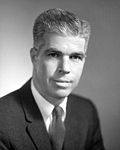Member
(District home) | Party | Years | Cong
ress | Electoral history | District location |
|---|
| District created March 4, 1893 |

John Calhoun Bell
(Montrose) | Populist | March 4, 1893 –
March 3, 1903 | 53rd
54th
55th
56th
57th | Elected in 1892.
Re-elected in 1894.
Re-elected in 1896.
Re-elected in 1898.
Re-elected in 1900.
Lost re-election. |

Herschel M. Hogg
(Telluride) | Republican | March 4, 1903 –
March 3, 1907 | 58th
59th | Elected in 1902
Re-elected in 1904.
Retired. |

Warren A. Haggott
(Idaho Springs) | Republican | March 4, 1907 –
March 3, 1909 | 60th | Elected in 1906.
Lost re-election. |

John Andrew Martin
(Pueblo) | Democratic | March 4, 1909 –
March 3, 1913 | 61st
62nd | Elected in 1908.
Re-elected in 1910.
Retired. |

Harry H. Seldomridge
(Colorado Springs) | Democratic | March 4, 1913 –
March 3, 1915 | 63rd | Elected in 1912.
Lost re-election. |

Charles B. Timberlake
(Sterling) | Republican | March 4, 1915 –
March 3, 1933 | 64th
65th
66th
67th
68th
69th
70th
71st
72nd | Elected in 1914.
Re-elected in 1916.
Re-elected in 1918.
Re-elected in 1920.
Re-elected in 1922.
Re-elected in 1924.
Re-elected in 1926.
Re-elected in 1928.
Re-elected in 1930.
Lost renomination. |

Fred N. Cummings
(Fort Collins) | Democratic | March 4, 1933 –
January 3, 1941 | 73rd
74th
75th
76th | Elected in 1932.
Re-elected in 1934.
Re-elected in 1936.
Re-elected in 1938.
Lost re-election. |

William S. Hill
(Fort Collins) | Republican | January 3, 1941 –
January 3, 1959 | 77th
78th
79th
80th
81st
82nd
83rd
84th
85th | Elected in 1940.
Re-elected in 1942.
Re-elected in 1944.
Re-elected in 1946.
Re-elected in 1948.
Re-elected in 1950.
Re-elected in 1952.
Re-elected in 1954.
Re-elected in 1956.
Retired. |

Byron Johnson
(Denver) | Democratic | January 3, 1959 –
January 3, 1961 | 86th | Elected in 1958.
Lost re-election. |

Pete Dominick
(Englewood) | Republican | January 3, 1961 –
January 3, 1963 | 87th | Elected in 1960.
Retired to run for U.S. senator. |

Don Brotzman
(Boulder) | Republican | January 3, 1963 –
January 3, 1965 | 88th | Elected in 1962.
Lost re-election. |

Roy H. McVicker
(Wheat Ridge) | Democratic | January 3, 1965 –
January 3, 1967 | 89th | Elected in 1964.
Lost re-election. |

Don Brotzman
(Boulder) | Republican | January 3, 1967 –
January 3, 1975 | 90th
91st
92nd
93rd | Elected again in 1966.
Re-elected in 1968.
Re-elected in 1970.
Re-elected in 1972.
Lost re-election |

Tim Wirth
(Boulder) | Democratic | January 3, 1975 –
January 3, 1987 | 94th
95th
96th
97th
98th
99th | Elected in 1974.
Re-elected in 1976.
Re-elected in 1978.
Re-elected in 1980.
Re-elected in 1982.
Re-elected in 1984.
Retired to run for U.S. senator. |

David Skaggs
(Boulder) | Democratic | January 3, 1987 –
January 3, 1999 | 100th
101st
102nd
103rd
104th
105th | Elected in 1986.
Re-elected in 1988.
Re-elected in 1990.
Re-elected in 1992.
Re-elected in 1994.
Re-elected in 1996.
Retired. |

Mark Udall
(Eldorado Springs) | Democratic | January 3, 1999 –
January 3, 2009 | 106th
107th
108th
109th
110th | Elected in 1998.
Re-elected in 2000.
Re-elected in 2002.
Re-elected in 2004.
Re-elected in 2006.
Retired to run for U.S. senator. | |
2003–2013
 |

Jared Polis
(Boulder) | Democratic | January 3, 2009 –
January 3, 2019 | 111th
112th
113th
114th
115th | Elected in 2008.
Re-elected in 2010.
Re-elected in 2012.
Re-elected in 2014.
Re-elected in 2016.
Retired to run for Governor of Colorado. |
2013–2023
 |

Joe Neguse
(Lafayette) | Democratic | January 3, 2019 –
present | 116th
117th
118th
119th | Elected in 2018.
Re-elected in 2020.
Re-elected in 2022.
Re-elected in 2024. |
2023–present
 |























